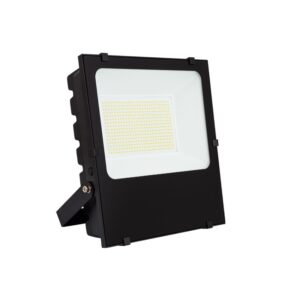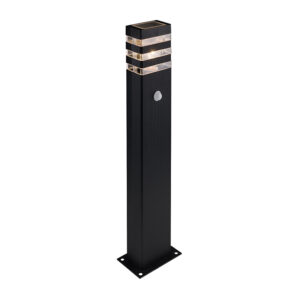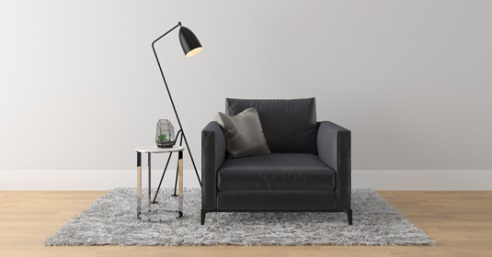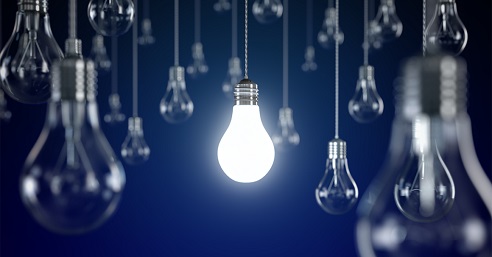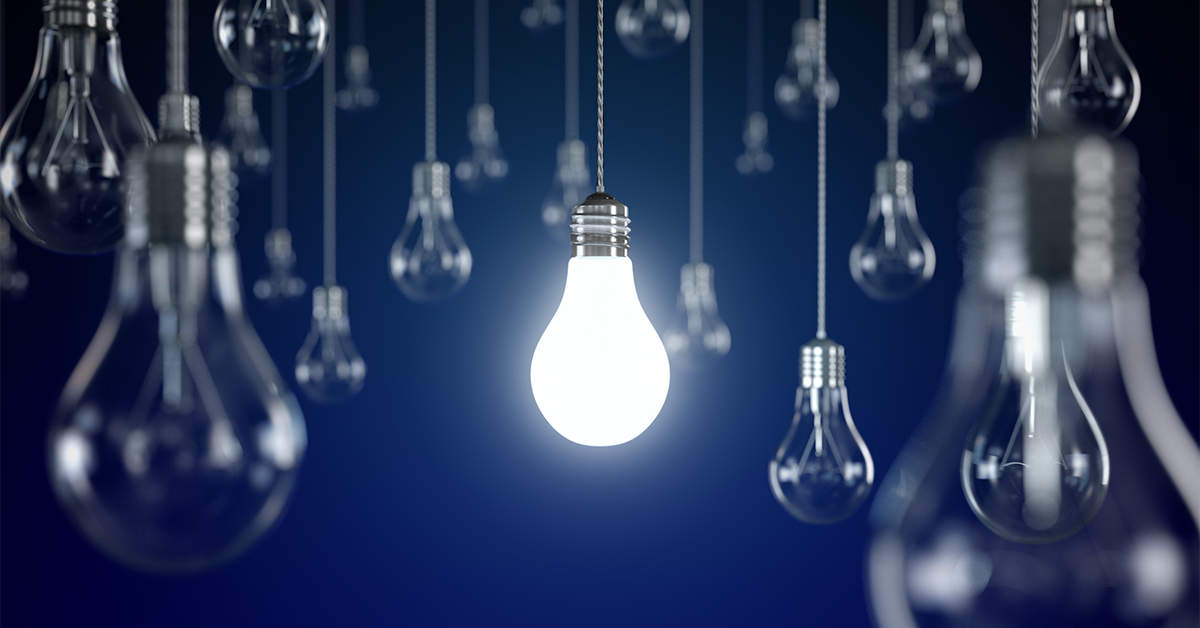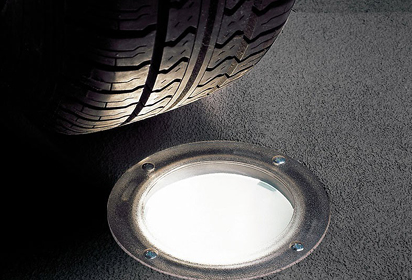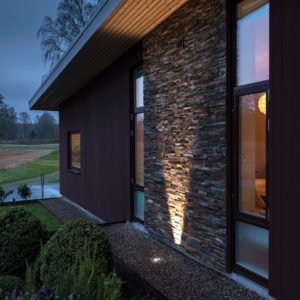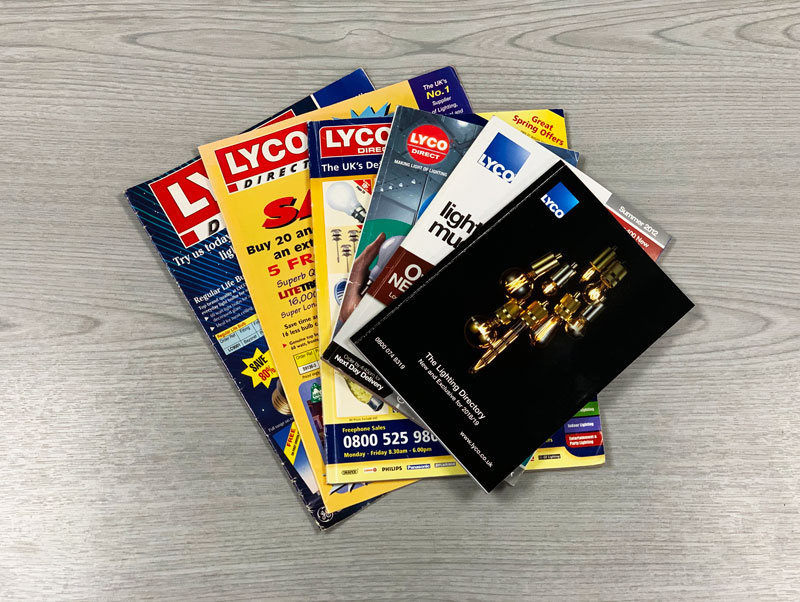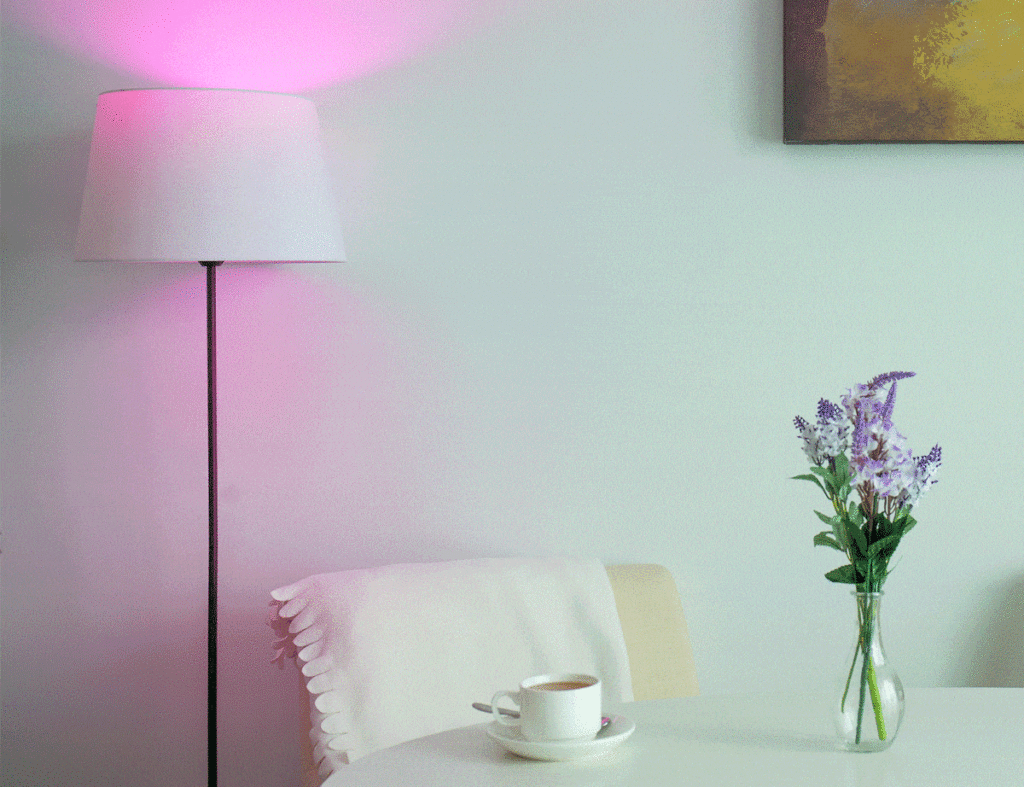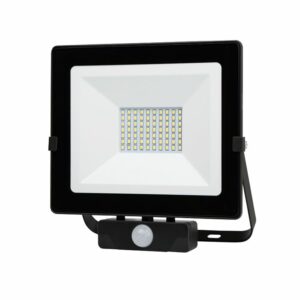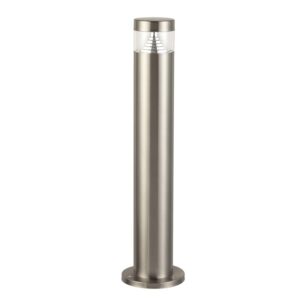In today’s security-conscious world, protecting our homes has never felt more important. Thankfully, technology has progressed so far that homeowners can keep track of their homes from anywhere in the world. Yet, for all the fancy gadgets and gizmos out there, one of the most effective methods of security remains the trusted security light.
In this article, we’ll cover everything you need to know about security lights, so that you can keep your home safe and secure, no matter your requirements. Keep reading to learn more…
Why security lighting is so important
Beyond the mere illumination provided, security lighting has myriad benefits.
When positioned correctly (don’t worry, we’ll cover the ins and outs of positioning later on) security lights provide peace of mind to homeowners that their home and possessions are secure.
A well-lit exterior sends a clear signal to any wrong-doers in the vicinity. An occupied, monitored property is harder to approach unseen.
And this isn’t just hyperbole. In 2019, a study by Nottingham Trent University’s Quantitative Criminology professor, Andromachi Tseloni, found that the best burglary deterrent was the WIDE combination – window locks, indoor lights on a timer, door double or deadlocks, and external lights.
By installing lights around entry points and dark corners, you build confidence in your home’s defences.
When paired with additional measures, such as cameras or alarms, you can improve the effectiveness of your security.
Security cameras perform best under consistent, uniform lighting. Sudden changes in brightness can wash out footage and obscure details. Security lights bring even illumination across key areas of your property, while reducing motion blur at night.
But beyond protection, security lights can help light up dark pathways, driveways, and steps, which may pose a hazard in low light conditions.
What are the different types of security lights?
Security lighting can be split in categories defined by power source and activation method, each with their own strengths and considerations. Let’s start by looking at the different power sources:
Solar-powered security lights
Over recent years, solar-powered security lights have boomed in popularity.
These lights convert sunlight into electrical energy via a photovoltaic panel, storing charge in an onboard battery during daylight hours.
Once ambient light falls below a set threshold, the stored power drives LEDs to illuminate without drawing from the mains electricity supply.
Because they require no cabling or electrician, installation is as simple as mounting both panel and lamp in an unobstructed sunlit area. Modern units often separate panel and luminaire to optimise orientation and ensure reliable performance even in variable UK climates.
Benefits of solar-powered security lights include:
- Low costs: relying on solar panels means there is no impact on your electricity bill.
- Easy installation: as simple as mounting both panel and lamp in unobstructed sun.
- Flexible placement: ideal for remote outbuildings or areas without mains access.
- Environmental benefit: green energy reduces carbon footprint.
- Low maintenance: panel cleaning and periodic battery checks suffice.
However, there are some downsides to solar-powered security lights. These can include:
- Variable output: dependent on sunlight exposure and seasonal variations.
- Limited runtime: shorter illumination after consecutive cloudy days.
- Placement constraints: panels must face south and remain unshaded.
Wired security lights
Wired security lights draw continuous power from your home’s mains electrical supply. This allows them to provide a constant, high-intensity beam regardless of weather or season.
Hardwired connections typically run through an outdoor-rated conduit to a junction box, where live, neutral and earth conductors feed floodlights, wall lights or spot fixtures.
While installation usually requires an electrician’s expertise, the result is a reliable, maintenance-free lighting solution.
Wired security lights are commonly used for the following reasons:
- Steady performance: unaffected by weather variations or daylight hours.
- High output: suitable for large driveways, commercial sites or stadiums.
- System integration: compatible with home automation, alarms and centralised control.
- Unlimited runtime: no battery constraints.
However, drawbacks include:
- Installation complexity: likely requires an experienced electrician.
- Running costs: use contributes to household electricity consumption.
- Fixed positioning: relocation will require rewiring.
With these different power source categories covered, let’s look at the activation method categories:
Motion sensor security lights
Motion sensor lights employ detection technologies, commonly passive infrared (PIR), microwave or a combination of both, to sense movement and activate illumination on demand.
PIR sensors monitor changes in heat signatures across their Fresnel-lens-enhanced field, triggering lights when a warm body crosses the beam.
Microwave units emit low-power radar pulses and respond to Doppler shifts caused by motion, extending coverage through light foliage or around corners.
Hybrid models require both infrared and microwave activation, dramatically reducing false triggers. The lights switch off after a pre-set interval, conserving energy while delivering instant alerting.
Motion sensor security lights are very popular because of their advantages:
- Energy efficiency: on-demand operation reduces wasted light.
- Minimised light pollution: remains dark until triggered.
- Adjustable detection: sensitivity, beam duration and coverage angles can be configured.
- Heightened security: sudden illumination when motion is sensed, deterring unwelcome visitors.
However, motion sensor security lights do have their drawbacks. These include:
- False alarms: depending on the detection technology selected, minor movements or temperature flares can trigger a higher number of false alarms.
Timer-activated security lights
As the name suggests, timer-activated lights rely on internal clocks or photocell sensors to switch on and off at predetermined times.
Schedules are programmed in, such as dusk to midnight, allowing your home’s exterior to be illuminated automatically. Alternatively, some models use photocell sensors which monitor sunlight levels, activating when light dims below a certain threshold.
This activation method appeals to homeowners for the following reasons:
- Consistency: lights follow predictable routines to simulate occupancy, thus deterring would-be intruders.
- Set-and-forget: once the lights are installed, you can leave them to function as required without the need for constant monitoring.
- Photocell models: adjust automatically to dusk and dawn, allowing for daylight changes per season.
However, there are some drawbacks to timer-activated security lights:
- Energy consumption: use during scheduled periods has an ongoing consumption of energy.
- Predictability: scheduled lights lack the heightened security of motion sensors.
What types of bulb are used in security lights?
In the security-lighting market, there are two main technologies that have been used for illumination: LED and halogen:
Light Emitting Diode (LED) bulbs
Over the past few decades, LED bulbs have boomed in popularity, revolutionising outdoor lighting in the process.
Unlike filament or gas-filled lamps, LEDs produce light in a tiny semiconductor chip when electrons cross a P–N junction and release energy as photons.
Modern LEDs use materials like gallium nitride to create bright white light with very little wasted heat. A small driver keeps the current steady, and an aluminium heat sink draws away warmth to protect the diode. Built-in lenses focus the beam, cutting down on glare and spill.
LEDs are favoured across a wide range of products because of their advantages:
- Energy saving: LEDs consume up to 85% less electricity than halogen equivalents.
- Lifespan: ratings range from 25,000 to 100,000 hours of continuous operation.
- Responsiveness: LEDs achieve full brightness within microseconds, making them perfect for motion-activated fixtures.
- Colour variety: LEDs offer a spectrum of hues, from warm white (2,700 K) to daylight (6,500 K), to suit security, decorative or wildlife-friendly schemes.
- Directional output: built-in optics focus light precisely where required, minimising spill and light pollution.
Halogen bulbs
Halogen bulbs house a tungsten filament inside a high-temperature quartz envelope filled with a small amount of halogen gas (usually iodine or bromine).
This “halogen cycle” captures evaporated tungsten and redeposits it onto the filament, allowing it to operate at higher temperatures than standard incandescents.
Despite their age, halogen lamps remain a popular option for many. However, that is quickly changing.
In 2021, the UK government announced plans to end the sale of halogen light bulbs as part of a wider effort to tackle climate change. As such, LED is fast becoming the primary option for security lighting.
What to look out for in security lighting
If you’re in the market for new security lighting for your property, there are a number of considerations you need to make to ensure the product is right for you:
Lumens vs. Watts
But before we get into the specifics, it’s important to understand lumens and watts.
For decades, wattage served as the shorthand for lamp brightness, but with the rise of energy-efficient technologies, this practice has become misleading.
- Lumens: measure the total quantity of visible light emitted by a source. Higher lumen values correspond directly to greater perceived brightness at fixture level.
- Watts: quantify the rate of energy consumption, not the light output itself. Two bulbs rated at 10 W might produce very different lumens if one uses LED technology and the other an older gas-discharge mechanism.
With that covered, let’s look at the important factors.
Illumination
Achieving a balance between brightness and coverage will determine how effectively security lights perform.
Two metrics govern these factors: lumens, and lux.
As we just covered, lumens indicate a lamp’s raw output. For general-purpose outdoor security:
- 50–300 lumens: will create subtle accent or landscape lighting, drawing the eye to features without overwhelming surroundings.
- 700–1,300 lumens: will illuminate driveways and paths, providing safe passage and clear sight lines.
- 1,500–2,000 lumens: will illuminate entrances, garages or high-value target zones where detail is essential.
Lux, on the other hand, measures illumination over a specific area. It refines lumen data by accounting for area.
One lux equals one lumen per square metre. When a 1,000-lumen floodlight disperses across 10 m², the resulting 100 lux provides strong visibility for CCTV capture and human recognition.
Conversely, too many lumens over a wide angle may yield low lux values, leaving shadows and blind spots.
Coverage hinges on beam angle and lamp positioning:
- Narrow-beam (15°–40°): spotlights concentrate light for focused tasks, such as highlighting a doorway or house number.
- Flood-beam (60°–120°): fixtures bathe larger areas in uniform light, making them ideal for driveways and gardens.
- Adjustable-head lights: allow fine-tuning of direction, eliminating dark corners and avoiding neighbour disturbance.
Practical setup tips:
- Mount lights at a height of 2.5–3 m for optimal spread without excessive glare.
- Angle fixtures slightly downward (5°–15°) to prevent light spill into windows or neighbouring properties.
- For irregular spaces, overlap adjacent beams by 10–20% to eradicate blind spots.
Considering both lumen and lux will help you achieve a security lighting scheme that illuminates every corner of your property without drawing complaints or wasting energy.
Durability
A good security light must endure rain, wind, UV exposure and seasonal temperature swings, year after year without failing.
Before purchase, check a light’s ability to withstand the elements to ensure continuous protection for your property, which can be achieved with the IP rating.
The industry standard for outdoor fixture ingress protection is the IP rating, which comprises two digits:
- First digit (solids): measures resistance to dust and foreign objects on a scale from 0 (no protection) to 6 (dust tight).
- Second digit (moisture): indicates water resistance from 0 (no protection) to 8 (immersion beyond one metre).
For most UK and northern European environments, an IP65 rating or higher is recommended.
IP65 fixtures are impervious to dust and withstand water jets from any direction, making them suitable for exposed walls, soffits and freestanding poles.
In coastal or industrial locations, IP66 or IP67 ratings can help to guard against salt spray, airborne contaminants and temporary immersion.
Placement
Another key consideration when buying security lighting is placement. Different lighting equipment is better suited to different locations and lighting conditions, so it is important to make sure you pick the right light for the job.
Focus first on entry points, such as front and back doors, garage entrances and ground-floor windows, that offer the biggest opportunity for a visitor to approach. Here, motion-sensored or time-activated lights will have the greatest effect.
Position fixtures at a height of 2–3 metres. This height is high enough to prevent tampering, yet low enough to achieve adequate beam coverage. Angle floodlights downward by 5°–15° to avoid glare while minimising dark shadows at ground level.
For lighting illuminating pathways, terraces, or driveways, ground-level post lighting is an ideal option. Commonly available with PIR movement sensors, these lights can provide around 6 metres of detection range, giving visitors ample visibility on approach.
If you select motion sensors, make sure they have an unobstructed field of view, free from overhanging foliage or parked vehicles.
For solar-powered lights, these need to have adequate access to sunlight, ideally on a south-facing wall with no shade during peak daylight hours.
For wired lights, isolate the circuit at the main breaker before beginning work. Run outdoor-rated cable through a shallow trench or along walls in conduit. Connect live, neutral and earth conductors within an IP-rated junction box, seal all entry points against moisture, affix the luminaire securely, then restore power and test sensor settings.
Smart features
If smart technology is your penchant, there are a number of options available.
For those who want to adjust control on the go, look for lighting with integrated app control. These products allow configuration of options such as illumination, detection range, time-activation, and more, giving you the control you need when away from home.
Smart home integration options mesh seamlessly with your existing home technology, allowing you to preprogram lighting scenes, combine sensor sensitivity, or integrate with smart assistants like Amazon Alexa, or Google Assistant to enable voice commands.
Wi-Fi connection options prevent connection dropouts, and protect your security lighting with end-to-end encryption and regular firmware updates to mitigate hacking risks.
While not standard on every security light on the market, these additional security measures can help to protect your home, and keep you in control.
Our top security light recommendations
With those considerations ticked off, let’s run through our top recommendations for security lighting to keep your home and property safe and secure:
Best security floodlight
If superior illumination is your desire, the 200W Dimmable Warm White LED Floodlight 27000lm PRO is your best choice.
Featuring an impressive 145 lm/W efficiency, its design allows for flexible placement, while the advanced SMD2835 LUMILEDS technology and 120º beam angle provide unbeatable light quality with a high colour rendering index.
Built from aluminium with optimal heat dispersion and an IP65 rating, this floodlight is built to last. Enjoy its long life, low maintenance, and energy savings, all with the convenience of a flicker-free, immediate start.
Find the 200W Dimmable Warm White LED Floodlight 27000lm PRO in our online shop.
Best post security light
When those pathways and driveways are in need of illumination, the Edit Rio 650 Outdoor Bollard Light with PIR Sensor is an excellent solution.
Featuring a sleek finish and a polycarbonate diffuser, this bollard light offers a bright, even illumination. The inbuilt PIR movement sensor has a detection range of up to 6 meters and 120°, allowing for reliable, secure detection.
The aluminium construction is designed to withstand the elements, making it a great, durable option for year-round outdoor use.
Enhance your outdoor area with the Edit Rio 650 Outdoor Bollard Light with PIR Sensor, available at Lyco.
Best solar-powered security lighting
If your goal is illumination without an electrical power connection, the Lutec Sunshine 8W LED Solar Floodlight with PIR sensor is our top choice.
With a bright 8W integrated daylight white LED light source, this floodlight provides 500 lumens to illuminate your decking, courtyard, or driveway with ease. A separate solar panel comes with a 5-meter-long cable so you can position both the floodlight and power source in the optimal position without compromise.
Best smart security lighting
For the tech-savvy among you, our recommendation for the best smart security lighting is the Brennenstuhl 20W Cool White LED Wifi Floodlight With PIR Sensor.
This smart LED floodlight can be controlled via the free Brennenstuhl Connect app, allowing for adjustment of light intensity, light temperature, timer, afterglow, and much more.
With a powerful 20W light, this Wi-Fi security light is a great option for automatically illuminating entrance areas, driveways, or gardens. Additionally, this product features voice control, with compatibility with Alexa and Google Assistant voice assistants.
You can find the Brennenstuhl 20W Cool White LED Wifi Floodlight With PIR Sensor on our website.
Find the right security lights at Lyco
We hope that you have found this guide to buying security lights useful. At Lyco, we have a wide range of security lighting to suit your security needs.
We are the UK’s premier lighting company, providing the latest products from around the world at the very best prices. We are able to dispatch 98% of all orders on the same day they are received.
If you want to know more about our products and services, our team have the knowledge to assist you. Contact us today to learn more.
Shop the best security lights at Lyco today
For more news, information, buying guides, and product advice, check out the Lyco blog…
How Light Works: The Ultimate Guide | Driveway Lighting Tips For Hospitality Venues | IP44 Lighting For Outdoors – Our Top 10



